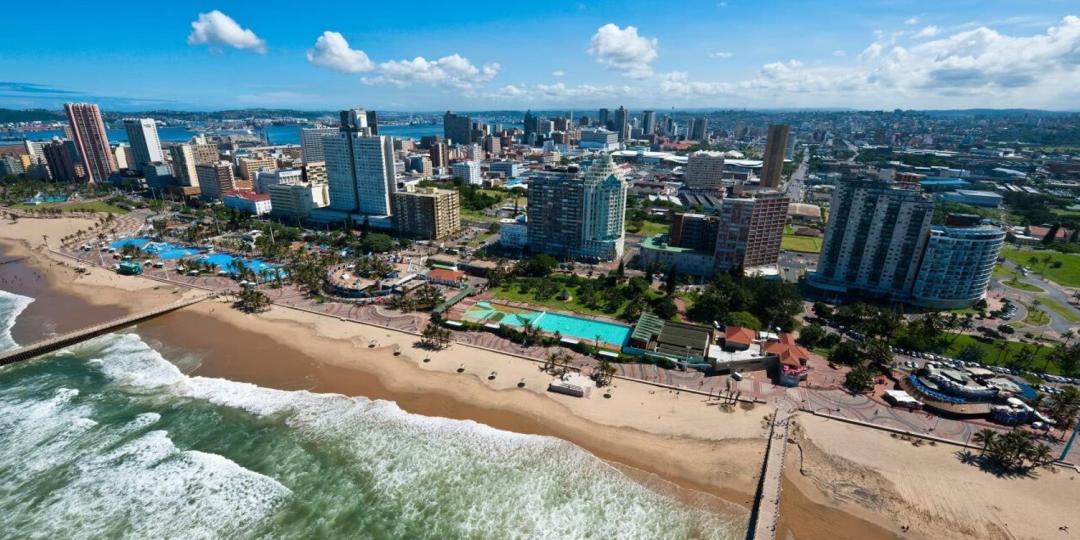Urban tourism has come under the spotlight following UN Tourism and the World Tourism Cities Federation’s (WTCF) report highlighting the need to measure the social and environmental impact of tourism on city destinations.
The report assesses the current situation and challenges of the collection of tourism data at a city level. The analysis will help to create a global database of urban tourism, enabling better understanding and benchmarking of the sector’s size and value, both globally and regionally.
Tourism Update spoke with South African urban tourism stakeholders to determine how the destinations measured their social and environmental impact, the size and value of their urban tourism sector, and how they collected tourism data.
Measuring social and environmental impact
The eThekwini Metropolitan Municipality, which includes the city of Durban and surrounding towns in KwaZulu Natal, said it measured its social impact through perception studies and visitor marketing strategies.
“The results ensure inclusivity of all communities for economic growth. Tourism encourages accessibility, infrastructure, and development in urban and rural areas, including investors investing in these areas, thereby increasing the socio-economy of the city. Our visitor marketing strategy encourages the dispersal of our visitors to all regions of the city,” said eThekwini Municipality Spokesperson, Gugu Sisilana.
The municipality also measured its environmental impact through a post-study of the major floods over the past two years, which led to significant infrastructural damage.
“Environmental challenges such as floods have a long-term negative effect on our offerings, discouraging new and repeat visitors from coming to Durban,” Sisilana added.
The Nelson Mandela Bay Metropolitan Municipality, which covers Gqeberha (formerly Port Elizabeth), the neighbouring towns of Kariega (formerly Uitenhage), Despatch, and the surrounding agricultural areas, admitted that it did not measure its social and environmental impact. However, Nelson Mandela Bay Metropolitan University continues to research similar and related topics that benefit the city.
The city has applied for, and received, various certifications that aim to protect its environmental assets. These include Blue Flag Status for its beaches, Green Flag Accreditation for 13 hiking trails and one canoe trail, as well as accreditation for its whale heritage site, bottlenose dolphin capital of the world, and international hope spot for the African Penguin.
Apart from this, the city is also in the process of declaring more public open spaces as nature reserves and is actively promoting green initiatives from the National Department of Tourism to minimise its environmental impact and promote sustainability in tourism operations.
“This includes eco-friendly accommodation options, waste management programmes, solar energy, and other efforts to reduce carbon emissions. The directorate works with Public Health to also help clean the city’s attractions and promote recycling,” said Mpho Pebane, Acting Executive Director for Economic Development, Tourism and Agriculture at Nelson Mandela Bay Convention Bureau.
Size and value of urban tourism sector
Sisilana provided the following data to highlight the size and value of Durban’s urban tourism sector:
- There are 601 accommodation establishments with 15 169 rooms.
- A total of 700 restaurants: 95 are categorised as cafés/coffee shops; 350 are casual/family restaurants; 75 are fine-dining restaurants; 40 are lifestyle/lounge restaurants; and 90 are pubs/grills. There are also 140 takeouts.
- A total of 35 tourism attractions.
“Durban Tourism’s major urban tourism offering is culinary tourism. Post-COVID-19 we have increased our marketing, PR and awareness digitally. We are also creating tourism apps for visitors to ensure easy accessibility in and around Durban,” said Sisilana.
A substantial upswing in both domestic and foreign direct spending has led to a noteworthy expansion in the overall economic impact of tourism within Nelson Mandela Bay.
“The total direct spend attributed to tourism exhibited robust growth post-COVID-19, registering a notable increase of 23.7%, up from just over R3.8bn (€187m) in 2021 to a commendable R4.7bn (€231.4m) in 2022. Beyond the realm of direct spending, the comprehensive impact of travel and tourism, encompassing both direct and induced effects, was estimated to contribute substantially to the Nelson Mandela Bay GDP, reaching an approximate total of R8.72bn (€429.3m) for the fiscal year 2022,” said Pebane.
Collecting tourism data
Durban Tourism measures and collects its tourism data using the following:
- Through a credible and well-experienced consultant who conducts socio-economic impact assessments in Durban, including event impact assessments as well as perception studies.
- Statistics are also collated and verified through Stats SA, South African Tourism annual reports, and its own internal studies, including business and tourism insights.
- Durban Tourism also conducts random sampling, which includes 500 interviews (face-to-face and collective) with domestic and foreign visitors in Durban on a monthly basis compared with South African Tourism, whichconducts 1 300 interviews throughout South Africa every month.
Pebane said the Economic Development, Tourism and Agriculture (EDTA) Directorate of Nelson Mandela Bay worked with economists, local professors and industry experts to develop its own methodology to measure tourism in the area.
“This includes the collection of indicators from various sources locally, such as accommodation occupancies. Where there is a lack of local data, we rely on provincial or national indicators. EDTA has also established a Tourism Research Committee to further develop and monitor the current methodology and to identify the city’s research agenda,” Pebane concluded.























